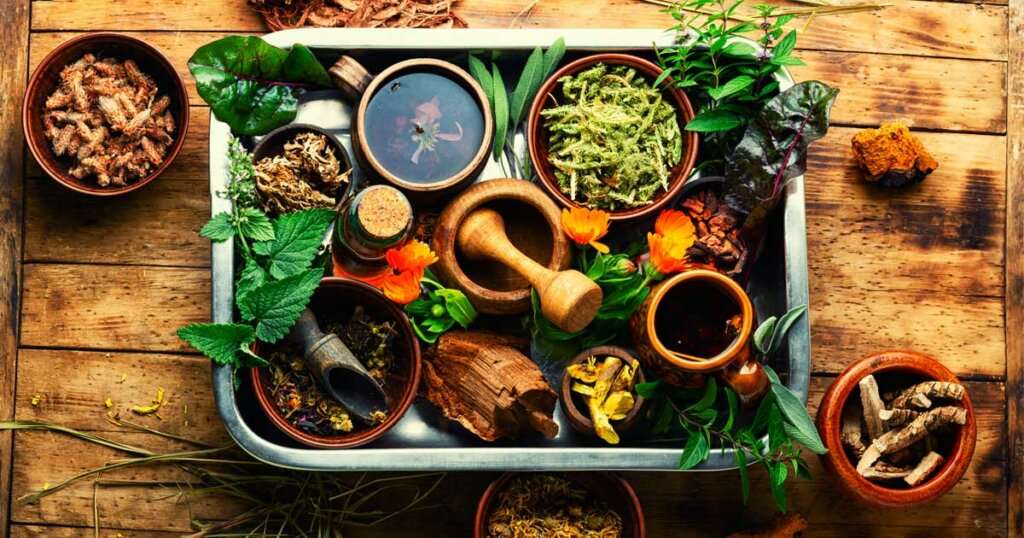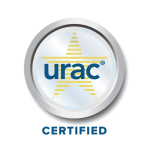High blood pressure, a global health concern, often prompts individuals to seek herbal remedies due to their affordability, acceptance, and minimal side effects. Alongside herbal treatments, remote patient monitoring (RPM) offers a complementary approach, providing real-time insights into blood pressure trends and facilitating proactive healthcare management.
Here are ten herbs renowned for their potential to lower blood pressure, complemented by the benefits of RPM for holistic health monitoring.
1. Garlic
Garlic has traditionally been used to treat a range of heart problems, particularly hyperlipidemia. It is also said to have hypotensive properties. It is considered to cause smooth muscle relaxation and vasodilation by increasing nitric oxide synthesis. Allicin is one of the key active chemicals in garlic that gives it its distinctive odor and many of its health benefits.
2. Celery
According to Chinese tradition, celery is useful for hypertension since it affects the liver. Celery was effective in lowering HTN in 14 of 16 individuals in mainland China. The juice was blended with an equivalent amount of honey and eaten orally three times a day for up to one week. It was also reported to lower systolic and diastolic blood pressure.
3. Ginger
Zingiber officinale, often known as ginger, is widely used in everyday cooking and for a variety of therapeutic applications. Ginger contains a lot of potassium, which helps regulate blood pressure and heart rate. (6)-gingerol is currently thought to be a novel Ang II type 1 receptor antagonist. Ginger has recently been discovered to lower total cholesterol, triglycerides, low-density lipoprotein (LDL), and very low-density lipoproteins (VLDL) (VLDL). It also suppresses the activity of ACE-1.
4. Ginseng
Ginseng is a hypotensive herb that comes in a variety of forms, including extracts, dried roots, and oil. Small amounts of ginseng raise blood pressure, whereas bigger doses lower it. Ginseng regulates blood pressure in hypotensive patients, most likely by affecting vascular function, modulating the autonomic nervous system, or changing the arterial baroreflex.
In mild hypertension patients, panax ginseng extract causes a significant decrease in SBP of 3.1 mm Hg and mm Hg in 2.3 DBP. Red ginseng’s ginsenoside Rg3 stimulates eNOS, increases NO and cGMP levels, and stimulates Ca2+-gated K+ channels. Ginseng also exhibits anti-proliferative properties in VSMCs, as well as antihypertensive and anti-atherosclerotic properties.
5. Lemongrass
The leaves and oil of the lemongrass plant are used to create medication. In Southern Asia, China, and Brazil, lemongrass is frequently utilized. Citral, the active phytochemical ingredient in lemongrass, is thought to be responsible for its antihypertensive properties. Citral crude extracts promote dose-dependent vasorelaxation. Lemongrass has a minor antioxidant effect by reducing ROS molecules and is implicated in anti-inflammatory pathways by inhibiting the activities of NF-B and iNOS.
6. Onion
Onions were found to lower blood pressure. Organo-sulfur compounds have been linked to lower blood pressure by maintaining the flexibility of major arteries while also lowering blood viscosity, preventing blood clotting. Quercetin, a compound most commonly associated with onions, can lower blood pressure by an average of 5 mm Hg by reducing oxidative stress and improving vascular function.
7. Turmeric
Curcuma longa, sometimes known as turmeric, is a plant native to Southeast India that is commonly grown in tropical areas of South Asia. Curcumin, the active ingredient in turmeric, has anti-inflammatory and anti-cancer properties. Curcumin has anti-CVD properties, such as lower blood pressure. Curcumin inhibits the progression of HTN by lowering AT1R expression in arteries by disrupting SP1/AT1R DNA binding. This reduces AT1R-mediated vasoconstriction and so inhibits the progression of hypertension.
8. Cinnamon
Cinnamomum zeylanicum is another herb that is used to treat HTN. Cinnamon has been shown to lower blood pressure and also help patients with prediabetes and type 2 diabetes (T2D). The aqueous extract of its stem bark lowers blood pressure and inhibits contractions caused by potassium chloride (also known as KCl), which is linked to the endothelium, NO, and the ATP-sensitive K+ channel (K ATP channel). The bark’s methanolic extract raises NO levels.
9. Buchu
Buchu is a South African medicinal plant that has been used for generations by the region’s indigenous peoples to treat a variety of maladies. It works as a diuretic that lowers the blood pressure and works as an anti-inflammatory. Buchu was utilized by early Dutch settlers to manufacture a brandy tincture, which is still used to cure a variety of ailments today.
10. Basil
According to reports, a crude extract of O. basilicum with a median effective dose of 30 mg/kg, lowers systolic, diastolic, and mean blood pressure in a dose-dependent manner. The antihypertensive impact lasts only two minutes before returning to normal. The extract’s cardiovascular action is linked to the presence of eugenol, which works by inhibiting calcium channels.
Enhancing Hypertension Management with DrKumo Remote Patient Monitoring
Innovations in healthcare extend beyond traditional pharmaceutical interventions, with RPM emerging as a pivotal tool in hypertension management. Integrating RPM solutions, such as those offered by DrKumo, with herbal treatments for blood pressure regulation provides a comprehensive approach to patient care.
By harnessing RPM technology, healthcare providers can remotely track vital signs, including blood pressure fluctuations, empowering timely interventions and personalized treatment adjustments. DrKumo RPM solutions complement the natural remedies explored in the blog, offering patients and clinicians actionable insights for optimized blood pressure control and holistic health management.
Frequently Asked Questions
Can RPM technology be used alongside herbal treatments to lower blood pressure?
Yes, RPM technology can complement herbal treatments by providing remote monitoring of vital signs, including blood pressure fluctuations.
How does RPM technology facilitate the tracking of blood pressure variations?
RPM technology allows for continuous monitoring of blood pressure remotely, enabling healthcare providers to track trends and intervene promptly if needed.
Are there any compatibility issues between RPM solutions and existing healthcare systems for managing hypertension?
RPM solutions like DrKumo’s are designed to integrate seamlessly with existing healthcare systems, facilitating streamlined hypertension management.
What advantages does RPM technology offer in terms of personalized treatment adjustments for hypertension?
RPM technology provides real-time insights into patient health data, enabling healthcare providers to tailor treatments based on individual needs and responses.
Are there any potential side effects of using herbal remedies to lower blood pressure?
While herbs are generally considered safe when used appropriately, some individuals may experience side effects such as digestive issues or allergic reactions. It’s important to consult with a healthcare provider before incorporating herbs into your regimen, especially if you have underlying health conditions or are taking medications.
Takeaways
Lowering blood pressure can be supported by incorporating promising herbs into your diet, complemented by RPM technology for remote monitoring of vital signs. However, for comprehensive management, it’s essential to combine these natural remedies with appropriate medications, a balanced diet, regular exercise, and healthy lifestyle choices.
Before integrating herbs or starting new medication, consulting with a healthcare provider is crucial. Additionally, continuous monitoring of vital signs through RPM ensures proactive management and personalized care, empowering individuals to maintain optimal blood pressure levels effectively.
For personalized hypertension management and holistic health monitoring, reach out to DrKumo today to explore our innovative Remote Patient Monitoring solutions. Contact us now to start optimizing your blood pressure control journey.









